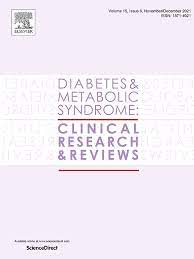Risk modeling in prospective diabetes studies: Association and predictive value of anthropometrics
Authors
Affiliations
Abstract
Aims: This study aimed to introduce and apply modern statistical techniques for assessing association and predictive value of risk factors in first-degree relatives (FDR) of patients with diabetes from repeatedly measured diabetes data.
Methods: We used data from 1319 FDR’s of patients with diabetes followed for 8 years. Association and predictive performance of weight (Wt), body mass index (BMI), waist and hip circumferences (WC and HC) and their ratio (WHR), waist-height ratio (WHtR) and a body shape index (ABSI) in relation to future diabetes were evaluated by using Cox regression and joint longitudinal-survival modeling.
Results: According to Cox regression, in total sample, WC, HC, Wt, WHtR and BMI had significant direct association with diabetes (all p < 0.01) with the best predictive ability for WHtR (concordance probability estimate = 0.575). Joint modeling suggested direct associations between diabetes and WC, WHR, Wt, WHtR and BMI in total sample (all p < 0.05). According to LPML criterion, WHtR was the best predictor in both total sample and females with LPML of -2666.27 and -2185.67, respectively. However, according to AUC criteria, BMI had the best predictive performance with AUC-JM = 0.7629 and dAUC-JM = 0.5883 in total sample. In females, both AUC criteria indicated that WC was the best predictor followed by WHtR.
Conclusion: WC, WHR, Wt, WHtR and BMI are among candidate anthropometric measures to be monitored in diabetes prevention programs. Larger multi-ethnic and multivariate research are warranted to assess interactions and identify the best predictors in subgroups.
Keywords: Anthropometric; Diabetes mellitus; Prospective; Relatives; Risk.

